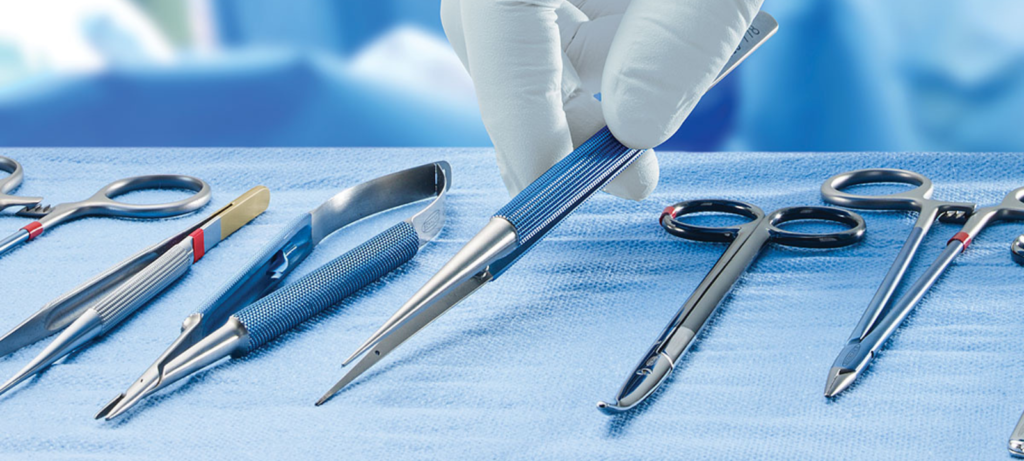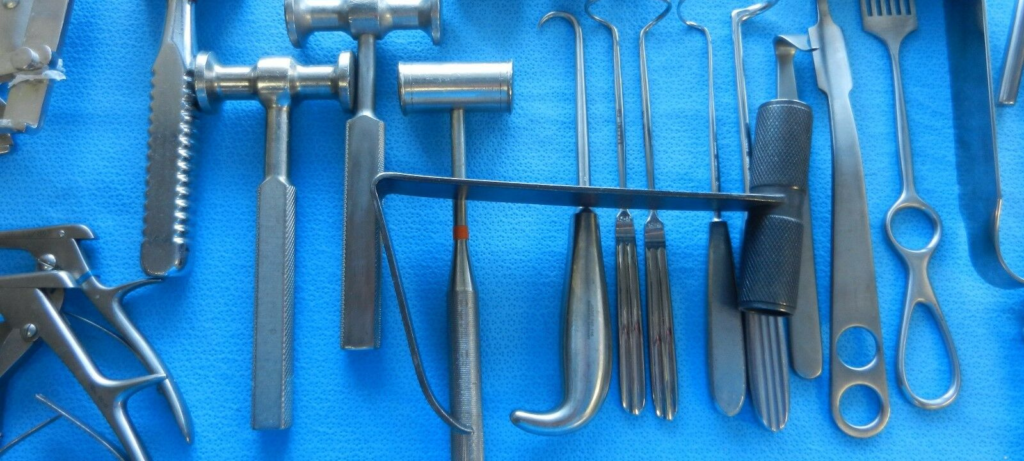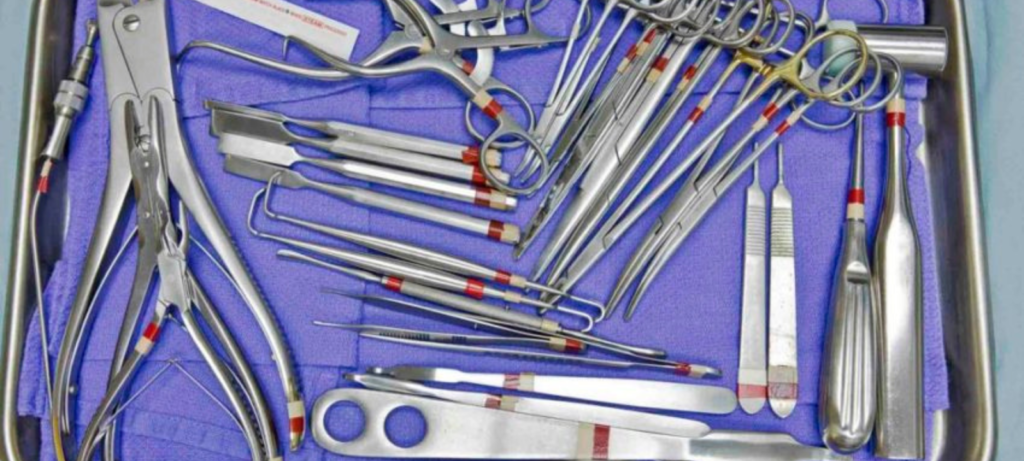The Evolution of Orthopedic Surgical Tools
Welcome to “The Evolution of Orthopedic Surgical Tools”! This blog will explore the history, current state, advantages, challenges, and future of orthopedic surgical tools. We will look at how these tools have evolved, the benefits they bring to the medical field, the difficulties they present, and the future of this technology. Join us on a journey through orthopedic surgical tools’ past, present, and future.
History of Orthopedic Surgical Tools

The history of orthopedic surgical tools dates back thousands of years when ancient civilizations used crude tools to treat bone and joint injuries. Ancient Egyptians, Greeks, and Romans all had some form of orthopedic surgical tools, although they were less sophisticated than today’s.
The earliest tools used for orthopedic surgery were likely made of stone and metal. These tools reset broken bones, reduce fractures, and remove diseased tissue. Ancient Egyptians used splints and casts to immobilize broken bones, while the Greeks and Romans used metal pins and screws to secure bones.
In the 18th century, advancements in medical technology led to the invention of new orthopedic surgical tools. Tools such as saws, drills, and forceps were used to treat bone and joint injuries more effectively. In the 19th century, the first orthopedic surgical instruments, including bone saws, drills, and chisels, were developed.
Since then, orthopedic surgical tools have come a long way. Modern orthopedic surgical tools are made of stainless steel and other materials that are strong, durable, and easy to sterilize. Additionally, the ergonomic design of these instruments enables surgeons to carry out operations with higher accuracy and precision.
Orthopedic surgical tools have changed significantly over time. Surgeons can access various tools, including specialized instruments for specific procedures. Robotic surgical instruments have also been developed due to new technology, enabling surgeons to carry out intricate surgeries with increased accuracy and precision.
Overall, the evolution of orthopedic surgical tools has revolutionized how orthopedic surgery is performed. From crude tools made of stone and metal to sophisticated robotic surgical tools, the evolution of orthopedic surgical tools has allowed surgeons to treat bone and joint injuries with excellent safety and efficacy.
Modern Orthopedic Surgical Tools

Orthopedic surgery has come a long way since its inception. In the past, orthopedic surgeons relied on simple tools like saws and hammers. Today, however, various modern tools are available to orthopedic surgeons that allow them to perform complex procedures with precision and accuracy. This chapter will examine the many kinds of instruments used in contemporary orthopedic surgery, the technological developments that have made this equipment possible, and the advantages of employing contemporary tools in orthopedic surgery.
Types of Tools Used Today:
Modern orthopedic surgery requires the use of a variety of specialized tools. These tools range from simple hand tools such as scalpel blades and forceps to more complex tools like drills, saws, and power tools. Many of these tools are designed to be used with a microscope, allowing surgeons greater precision and accuracy. Additionally, many of these tools are made of stainless steel, titanium, or other materials designed to be durable and corrosion-resistant.
Advancements in Technology:
Modern orthopedic surgical tools have benefited from advancements in technology. For example, many of the tools used in orthopedic surgery are now computer-controlled, allowing surgeons to make precise cuts and minimize the risk of error. Additionally, many of the tools used in orthopedic surgery are now designed to be ergonomic, meaning they reduce the risk of fatigue and strain on the surgeon.
Benefits of Modern Tools:
The use of modern tools in orthopedic surgery provides several benefits:
- Modern tools allow surgeons to perform complex procedures with greater precision and accuracy.
- Modern tools can reduce the risk of complications and help surgeons achieve better patient outcomes.
- Modern tools can reduce the time needed to complete a procedure, allowing surgeons to see more patients in less time.
Modern orthopedic surgical tools have revolutionized the way orthopedic surgeons perform procedures. By utilizing the latest technology and tools, orthopedic surgeons can provide their patients with safe and effective treatments. From simple hand tools to computer-controlled tools, modern orthopedic surgical tools allow surgeons to perform complex procedures with greater precision and accuracy. Additionally, using modern tools can reduce the risk of complications and help surgeons achieve better patient outcomes.
Advantages of Orthopedic Surgical Tools

The advances in orthopedic surgical tools have revolutionized the field of orthopedic surgery. As technology improves, orthopedic surgical tools become more precise and accurate, leading to better patient outcomes. Here are just some of the advantages that orthopedic surgical tools provide:
Improved Precision and Accuracy: Orthopedic surgical tools are now designed to be incredibly precise and accurate. This allows surgeons to perform complex surgeries more precisely and accurately than ever. This leads to better outcomes for patients, as well as reduced risk of errors and complications.
Increased Safety: Orthopedic surgical tools are designed with safety in mind. They are created to reduce the danger of infection and other issues using safe materials within the human body. This leads to a safer surgical experience for patients.
Reduced Recovery Time: Orthopedic surgical tools are also designed to reduce recovery time. This is because they are more precise and accurate and can be used to perform surgeries with fewer incisions and less tissue damage. This leads to a faster recovery time for patients.
These are just some of the advantages that orthopedic surgical tools provide. The advantages of orthopedic surgical instruments will increase as technology advances. This will improve patient outcomes and a safer surgical experience for everyone involved.
Challenges of Orthopedic Surgical Tools

The use of orthopedic surgical tools has come a long way in recent years, but several associated challenges remain. The cost of these tools can be high, and the training required to use them properly and safely is extensive. In addition, potential risks associated with using these tools can be significant.
Cost:
The cost of orthopedic surgical tools can be high, which can be a challenge for healthcare providers. Many of these tools are complex and require specialized training, so the cost of training staff to use them correctly can also be a challenge. Additionally, the tool’s cost can be prohibitive for some healthcare providers.
Training:
The training required to use orthopedic surgical tools safely and adequately is extensive. Healthcare providers may need help ensuring that their personnel have the requisite knowledge and training to use the equipment safely and efficiently. Additionally, the training must be updated, as new techniques and technologies are constantly being developed.
Potential Risks:
The potential risks associated with using orthopedic surgical tools can be significant. If these tools are not utilized correctly, they might be fatal or severely hurting. Healthcare providers must take necessary precautions due to potential device hazards.
Overall, orthopedic surgical tools have come a long way in recent years, but several associated challenges remain. The cost of these tools can be high, and the training required to use them properly and safely is extensive. In addition, potential risks associated with using these tools can be significant. Healthcare professionals must be aware of these instruments’ difficulties and take the appropriate safety measures.
Future of Orthopedic Surgical Tools

The world of orthopedic surgical tools is constantly evolving and advancing. With the increase in technology and the advancement of medical science, there is no doubt that the future of orthopedic surgical tools is bright. In the coming years, we expect to see potential new tools, continued technological advancements, and potential new applications for these tools.
Potential New Tools:
With the advancements in technology, there is potential for new tools to be developed that can help orthopedic surgeons perform their surgeries more efficiently and accurately. This could include new types of drills, saws, and other tools that are more precise and easier to use. Additionally, these new tools can reduce the time it takes to perform a surgery, making them even more attractive to surgeons.
Continued Technological Advancements:
In addition to the potential for new tools, we expect continued advancements in the technology used in orthopedic surgical tools. This could include improved imaging technologies, such as 3D printing, to help surgeons plan and execute their surgeries more accurately. It could also include robotic systems to help surgeons perform their surgeries more accurately and precisely.
Potential New Applications for Tools:
Finally, we can also see potential new applications for these tools. This could include using them for minimally invasive surgeries or surgeries involving difficult-to-reach areas of the body. Additionally, these tools could help surgeons perform more complex surgeries, such as joint replacements or spinal surgeries.
The future of orthopedic surgical tools will be filled with exciting advancements and potential new applications. With the continued advancements in technology, there is no doubt that these tools will become even more precise and efficient. As the technology continues to evolve, so too will the potential for new tools and applications for these tools.
Conclusion
The evolution of orthopedic surgical tools has been remarkable. From the early days of crude instruments to modern-day high-tech devices, technological advances have allowed more precise and successful surgeries. The advantages of orthopedic surgical tools are numerous, from shorter operating times to less post-operative pain and fewer complications.
However, challenges still need to be solved in the form of cost, limited availability, and limited training for surgeons. Despite the challenges, the future of orthopedic surgical tools appears promising, with the potential for more specialized and advanced tools to help surgeons perform complex procedures with greater accuracy and precision. With the continued development of technology and the advancement of medical science, the possibilities for orthopedic surgical tools are endless.
